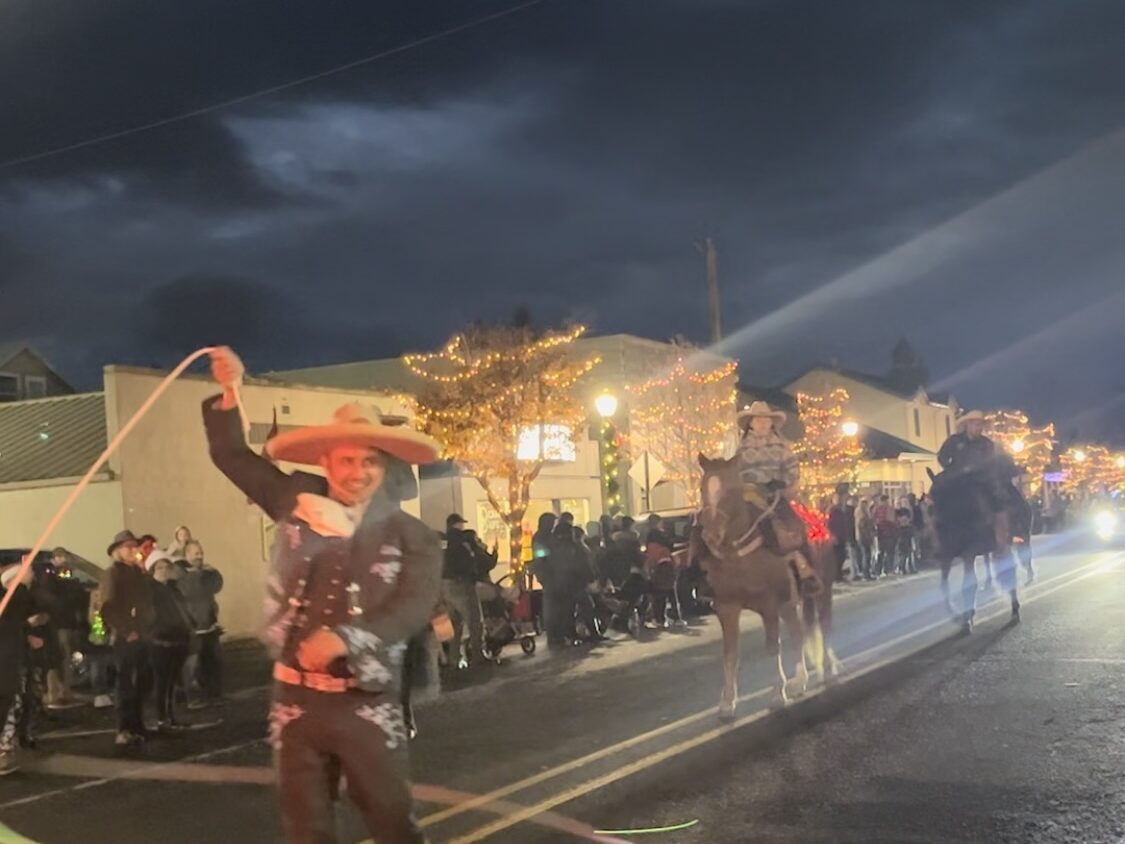“When I found the community of charros, I immediately felt that I belonged,” says Antonio Huerta, director of Comunidad y Herencia Cultural. “It just felt right.”
The grand opening of the Charro Attire Exhibit is May 2 at the Cottage Grove Library. Huerta says that during the opening there will be rope trick demonstrations, food and prizes. The exhibit will feature traditional and colorful dress for both men and women of a sport that goes back 500 years.
Huerta defines charrería as the “horsemanship, use of the rope and cattle work” that has evolved over the years into a performance and culture all its own. “For all people of Mexican origin, charrería has shaped us,” he says. “We all have interacted with horsemanship and in all the towns and cities, you see the competitions and how they bring everybody together.”
Charrería has not only shaped the people, but forged the identity of México as a whole, Huerta says. “It started when the Spanish brought horses and cattle to the American continent.” At first, “the Mexican Indigenous people were not allowed to ride horses,” he says. As the populations of horses and cattle grew, the Spanish landowners simply didn’t have the numbers to accommodate the rising need for horseback riders, Huerta explains. In the end they were forced to enlist the help of the Indigenous people to ride horses, round up and lasso cattle.
“The Spanish brought some attire or equipment with them, but all of that was adapted to the landscape of México,” he says. “It could be utilized for the work that Indigenous people needed to do.” Huerta offers the example of how the Mexican saddle was adapted from the Spanish saddle. The larger horn on the Mexican saddle is better for lassoing animals and reducing their speed, and also makes the hold sturdier and less likely to break. Over the decades, the sport has evolved into a performance as well, featuring colorful costumes and increasingly difficult lasso tricks.
“Women are part of the tradition,” Huerta confirms. “Their participation is called escaramuza, and it is basically a folkloric ballet on horseback.” Wearing traditional colorful dresses, the women ride sidesaddle and perform choreographed numbers.
“Their performance relates to the role they played during the Mexican revolution,” he says. “They had to protect themselves, their homes, families, land and belongings while the men were fighting — at times they had to do it on horseback.” Huerta says their participation honors their skill and contributions during the Mexican Revolution.
Huerta has an unlikely personal history with the tradition. “Usually, if there’s someone in the family who’s good at rope tricks, you learn from them,” he says. “For me that was not the case.” Though his father and grandparents were “pretty good” at lassoing, they weren’t adept at rope tricks. Huerta learned those as an adult, among the charros in the U.S. But for the most part, he explains, charrería is passed down from generation to generation.
“I was always intrigued by charrería growing up,” Huerta says. “There were events that I attended, and it totally drew me. I think it was this idea of building a relationship with the horses.” Huerta has always admired horses. “Horses are incredibly smart,” he says. “They’re powerful. They could easily buck us off, yet they choose to work in partnership with us.”
Huerta is hopeful about what the Charro Attire Exhibit will mean to the Spanish speaking community of Cottage Grove. “The exhibition is about creating spaces and opportunities where the Spanish speaking community feels represented,” he says. “It’s a way to honor and acknowledge their contributions to our communities.”
The grand opening of the Charro Attire Exhibit is 5 pm to 7 pm Tuesday, May 2, at the Cottage Grove Library, 700 E. Gibbs Avenue. The exhibit runs through June 2.
